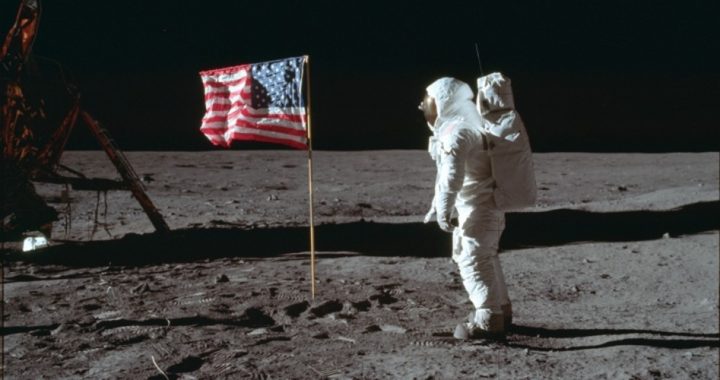
The 20th century was one of wonders and horrors, in both cases, never before equaled. The horrors came courtesy of war, famine, dictatorship, and genocide, of which there was far too much. The wonders, equally stupendous, were the counterpoint to the horrors, inspiring generations throughout the century to ever greater exertions, discoveries, and accomplishments. When the century started, horse and buggy predominated, and steam power ran the rails. Crossing the ocean remained a dangerous proposition. Electricity was a fancy thing, available to a few in the big cities. The moon may have been made of green cheese, for all most of the population knew.
At the beginning came innovators like Henry Ford and the Wright brothers. They changed everything. Thirty years into the century, the primitive but revolutionary Model T, still trundling around, had been surpassed by automobiles such as the cutting-edge, streamlined Chrysler Airflow of 1934. By 1936, only 33 years after the Wright Brothers first left the ground on a contraption made of twigs and fabric, you could drive your Chrysler to the airport and hop on board a shiny new American Airlines Douglas DC-3 airliner and fly to Newark, New Jersey. That amazing plane remains in operation even today.
Only 33 years after the DC-3 entered commercial service, in 1969, you could fly on a modern, jet-powered Boeing 707, land at the Orlando Jetpark at McCoy Air Force Base in the city of Orlando, Florida, rent a high-powered Shelby Mustang GT350H from Hertz car rentals (if you were very lucky), and drive over to Cape Kennedy and watch as a towering Saturn 5 rocket hurled three men to meet destiny above and on the Sea of Tranquility on the Moon. All this in just 66 years.
As of July 20, 2019, it has now been 50 years since two of those three men hurled into the sky in 1969 actually walked on the Moon. The first man down the ladder from the lander, Neil Armstrong, noted in immortal words that his was a small step, personally for himself, but an awful big step for Mankind as a whole. The great Buzz Aldrin looking at the surreal landscape remarked that it appeared to be a “magnificent desolation.” Circling the moon in the Command Module was astronaut Michael Collins. As he orbited, back on Earth Mission Control took to the radio to the magnitude of his separation from his fellow men. “Not since Adam has any human known such solitude as Mike Collins is experiencing during this 47 minutes of each lunar revolution when he’s behind the Moon with no one to talk to except his tape recorder aboard Columbia.”
From our point of view today the technology of Apollo looks quaint and old fashioned, making the moon landing seem even more incredible. We connect our toasters to the Internet, along with everything else. Your refrigerator can help compile your shopping list. If you have a car built in the last 20 years or so, you can plug a small, cheap device into a port under the dash and then view hundreds of performance parameters beamed wirelessly from that device to your smart phone. Your smart watch has more computing power than all of the computing power available to NASA in 1969. The technology of the mundane that we have nowadays is truly amazing. And yet, we still can’t duplicate what the Apollo program accomplished five decades ago.
Apollo, of course, was a NASA program, operated by a branch of the Federal government. Nowhere in the Constitution did James Madison note a grant of any authority to the three branches to set up a program to send people to the moon. But, since Apollo did get to the moon, fans of big government have used the success of the program to point out the need for, and the desirability of, big government programs. This is the attitude that permeates commentary made by columnist Max Boot in the pages of the Washington Post on July 18. Reflecting on Americans’ disenchantment with government, Boot opined that the “challenge for the next Democratic president will be to revive confidence in Washington,” getting it back to something like the level that prevailed at the time of Apollo. Democrats, Boot concluded, “must also channel the can-do spirit that made the moon landing possible.”
That only big government can accomplish big projects, as Boot suggests, is not, however, the lesson of Apollo. Nor is it historically accurate to view Apollo solely as the successful culmination of a big government project.
Instead, Apollo was actually the culmination of the 66 years of technological development, starting with Henry Ford and the Wright Brothers, that preceded it, and all of that technological development that made Apollo possible was invented, built, and improved upon in the private sector. From the technology of flight to the Ford Production System that was the first large-scale implementation of what has come to be known as “Lean Manufacturing,” almost all of the technologies that made Apollo possible came about through private enterprise.
Even a young Neil Armstrong, as a boy, was inspired to pursue flight as a career by private sector developments. “I began to focus on aviation probably at age eight or nine, and inspired by what I’d read and seen about aviation and building model aircraft, why, I determined at an early age — and I don’t know exactly what age, while I was still in elementary school — that that was the field I wanted to go into,” he recalled in an interview in 2001.
And, of course, big government proved to be incapable of keeping us on the moon, or of opening up the solar system as most dreamed of doing during and immediately after the Apollo era. Today, now that private investors are seeing commercial prospects in space, it is once again the private sector that is producing the innovations that seem most likely to put boot prints back on the moon and beyond.
There is a new and exciting space race, and this time it is not between governments. Today’s space race is between private entities such as SpaceX, Blue Origin, Virgin Galactic, and many others. And, while government has been busy spending billions on its new Space Launch System (SLS) — derided by its critics as the “Senate Launch System” — private space innovations are coming fast and furious. SpaceX alone has demonstrated its remarkable ability to simultaneously land boosters after launch, even at sea. And, it is already building and preparing to fly the first testing stages of the largest and most advanced space vehicle ever conceived, the Starship, something as absurdly advanced in concept as Apollo probably seemed in the mid-1960s.
The legacy of Apollo is not that big government programs can put people on the moon. The legacy of Apollo is that human ingenuity, when left unfettered by the artificial bounds of unnecessary regulation, can achieve technological and scientific successes that seem almost magical.
Fifty years after Armstrong’s “first great leap,” private enterprise is about to head back to space. This time, we’ll be there to stay.
Photo showing astronaut Buzz Aldrin next to American flag: Neil Armstrong/NASA via AP



